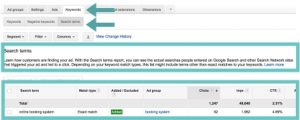
How to Effectively Measure Social Media Results
Social media platforms are changing and how people use these platforms is changing. How we measure social media results will need to change too. For example, Instagram has been testing removing likes on posts. In a “private like” model, only the account user will know the total likes on posts. While there’s no word yet that other platforms like Twitter or LinkedIn will follow suit, this test is a reminder that there isn’t a single metric that can show success on social media.
Social Media Measurement
Measurement has long been a challenge in the PR and communications industry. Social media has been one medium with numbers directly attached to efforts. Showing real numbers has helped brands justify social media efforts and activity. The “classic” approach to social media measurement has relied on tallying engagements (i.e. “likes”) to show how well a post performed.
Although the “private like” model will still yield numbers to gauge performance, this classic model needs to change. There are more platforms available now than ever before – and likely new ones coming out in the near future. We’ve seen a decline in engagement over the past few years. Numbers are not recovering. Looking just at engagement metrics is an unsustainable approach to measuring social media results. In fact, thinking about it as “social media results” is the wrong approach and mindset.
Brand and Business Impact
Looking at social media results as a standalone metric can’t tell you a complete story. Any number in a vacuum is without context and incapable of showing actual impact. We need to move away from the metrics and “results” model and toward a brand and business impact model for social media measurement.
How did social media efforts impact business goals? What was the overall impact on the brand?
These are the questions we need to ask when calculating the value of social media efforts. And that means looking at much more than likes. It means looking at more than any type of engagement on a single post.
How to Measure Social Media Impact
Ready to change your approach? Here are the three things to keep in mind when measuring social media impact.
- Define goals. The goal should be something big that matters for the brand and business overall. Think: brand lift or recognition, leads or conversions. Move away from a goal of X% engagement per post. Think bigger and beyond social media platforms when defining goals.
- Set KPIs. Key performance indicators (KPIs) can be metric based, but they can (and should) include qualitative indicators as well. A good metric based KPI could be referral traffic from social media channels. A good qualitative KPI could be evaluating the quality and sentiment of comments. It’s a more nuanced performance indicator than counting clicks or likes but one that shows impact toward those higher-level goals.
- Correlate everything. Comparisons add context for measurement. Capturing all the quantitative metrics you can allows you to correlate data and show impact in different ways. For example, we could correlate the number of video views on social media to the number of direct searches. Compare impressions to website traffic. Look for the trends in numbers to get a sense of what matches and may have impacted other key metrics and performance indicators.
Social media provides a treasure trove of potential data points to measure. But social media measurement can be complex. Knowing how to measure social media impact will untangle that data to be actionable and insightful.
Digital & Social Articles on Business 2 Community
(64)
Report Post





